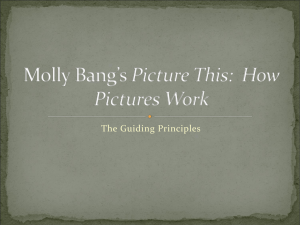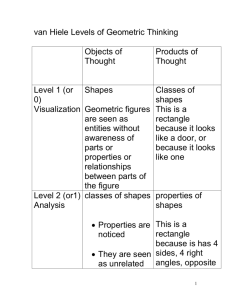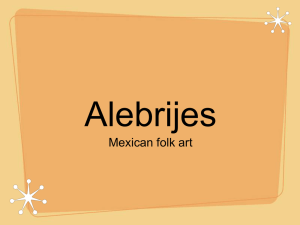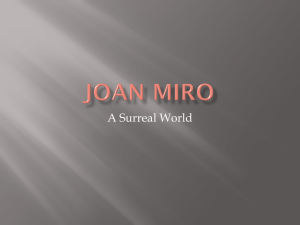Properties of Shapes
advertisement
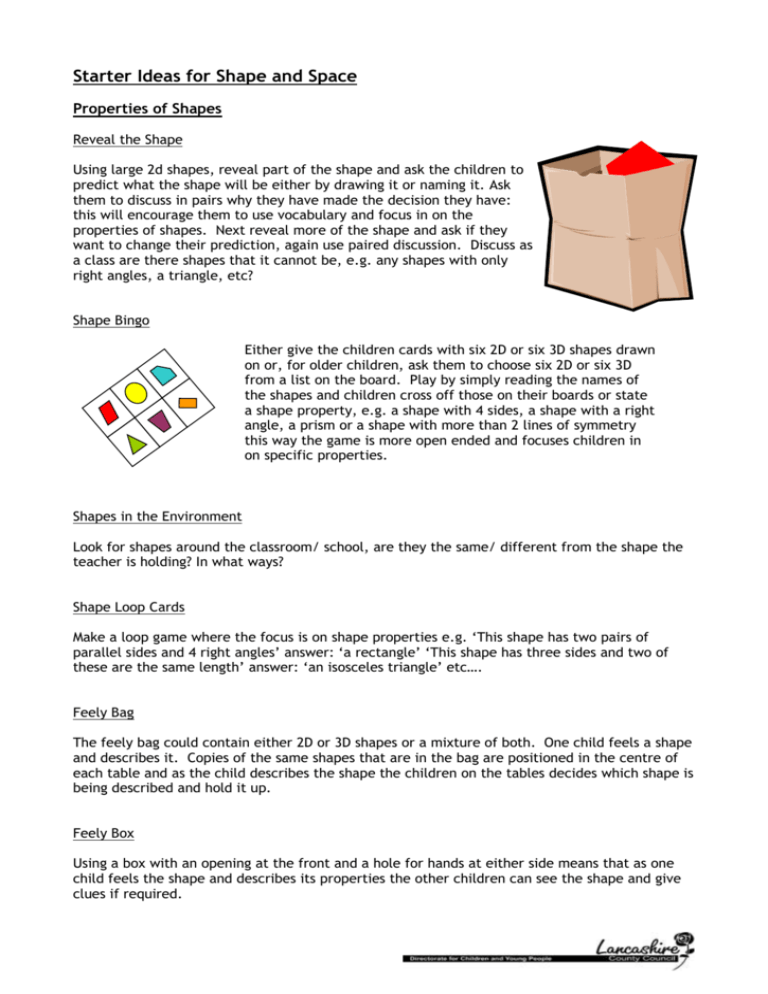
Starter Ideas for Shape and Space Properties of Shapes Reveal the Shape Using large 2d shapes, reveal part of the shape and ask the children to predict what the shape will be either by drawing it or naming it. Ask them to discuss in pairs why they have made the decision they have: this will encourage them to use vocabulary and focus in on the properties of shapes. Next reveal more of the shape and ask if they want to change their prediction, again use paired discussion. Discuss as a class are there shapes that it cannot be, e.g. any shapes with only right angles, a triangle, etc? Shape Bingo Either give the children cards with six 2D or six 3D shapes drawn on or, for older children, ask them to choose six 2D or six 3D from a list on the board. Play by simply reading the names of the shapes and children cross off those on their boards or state a shape property, e.g. a shape with 4 sides, a shape with a right angle, a prism or a shape with more than 2 lines of symmetry this way the game is more open ended and focuses children in on specific properties. Shapes in the Environment Look for shapes around the classroom/ school, are they the same/ different from the shape the teacher is holding? In what ways? Shape Loop Cards Make a loop game where the focus is on shape properties e.g. ‘This shape has two pairs of parallel sides and 4 right angles’ answer: ‘a rectangle’ ‘This shape has three sides and two of these are the same length’ answer: ‘an isosceles triangle’ etc…. Feely Bag The feely bag could contain either 2D or 3D shapes or a mixture of both. One child feels a shape and describes it. Copies of the same shapes that are in the bag are positioned in the centre of each table and as the child describes the shape the children on the tables decides which shape is being described and hold it up. Feely Box Using a box with an opening at the front and a hole for hands at either side means that as one child feels the shape and describes its properties the other children can see the shape and give clues if required. Shape on Post-it cone One child has the name of a shape on a post-it stuck to their forehead. He/ she asks the other children questions to which they can only answer yes or no in order to ascertain which shape name is written on the post-it. Back To Back ‘Yes/No’ Questions Children play in pairs, one child has a shape which the other child cannot see, they have to find out what the shape is by asking questions to which their partner can answer only yes or no. Draw On Backs In pairs children can draw shapes with their finger on their partner’s back for them to guess the shape. Cross the River The teacher makes ‘stepping stones’ out of card. These can either be cut in the shape of particular 2d shapes and may or may not have the names of shapes written on them. The children then need to give each other instructions to ‘cross the river’ using a particular route, e.g. first step on a four sided shape, next step on a triangle, next step on a shape with no corners, etc. Roll Die with Number of Sides/ Lines of Symmetry The teacher can roll a large die and the children have to draw or find from a selection of shapes a shape that matches the criteria. The criteria might be the number of sides, the number of angles, the number of lines of symmetry or a combination of more than one property. Regular and Irregular The teacher shows a regular shape or says the name of a shape and the children draw and irregular version of that shape on their whiteboards. Shape Hangman One child chooses a shape and the rest of the class try to guess that shape, each time they get a ‘no’ answer part of the hangman is drawn. Shape Facts Hold up a shape or shape name, children work in pairs to find as many facts as they can about that shape. Reinforcing Addition/ Subtraction Facts The number of sides of a pentagon + the number of sides of a triangle the number of sides of an octagon – the number of sides of a square. + Odd One Out Put out a selection of shapes, ask which one is the odd one out and why, encourage children to justify their responses and realise there isn’t just one ‘right answer’. Sorting and Classifying Venn Diagram Children need experience of sorting shapes and by combining an activity with Venn diagrams this reinforces data handling also. The activity can be carried out in a variety of ways: Using PE hoops on the floor with the rules marked on children can place their shapes in the appropriate sections of the Venn Diagram. This game can also be carried out without the rules marked on so that the children have to ‘Guess the Rule’ in order to place their shapes in the diagram. Children can play ‘Guess My Rule’ in pairs also. This activity can also be done on a board, an over head or using a specific program on an interactive whiteboard. Carroll Diagram As above but with a Carroll Diagram which can be marked out using ribbons or masking tape on the floor. Again it can be used with the rules marked on or as a guess my rule game as a whole class or in pairs. Tree Diagram As a way of sorting shapes a tree diagram can be used. Again the floor may be utilised with tape forming the branches and questions at each junction to which the children respond yes or no. Again they can devise their own tree diagrams and this focuses their minds on the various properties of shapes and ways in which they may be sorted. Tables A table with different criteria may be displayed on the board or on an OHP and the children can place their shapes in the appropriate section on the table. Visualising Imaginings Imagine a large black equilateral triangle then imagine three smaller white equilateral triangles. Imagine placing the white triangles into the corners of the black triangle, what black shape can you still see in the middle of the black triangle? Imaginings 2 Imagine a square, picture two of the corners being cut of the square using a straight line for each one, what shape remains out of the square? Visualising 3D or 2D shapes Simply describe certain properties of a 2D or 3D shape and ask the children to draw or write the name of that shape. Joining 2D shapes Ask the children to imagine two 2D shapes and place them so that two straight edges join together, what shape can they see, e.g. a square and a right angled triangle might produce a trapezium.




